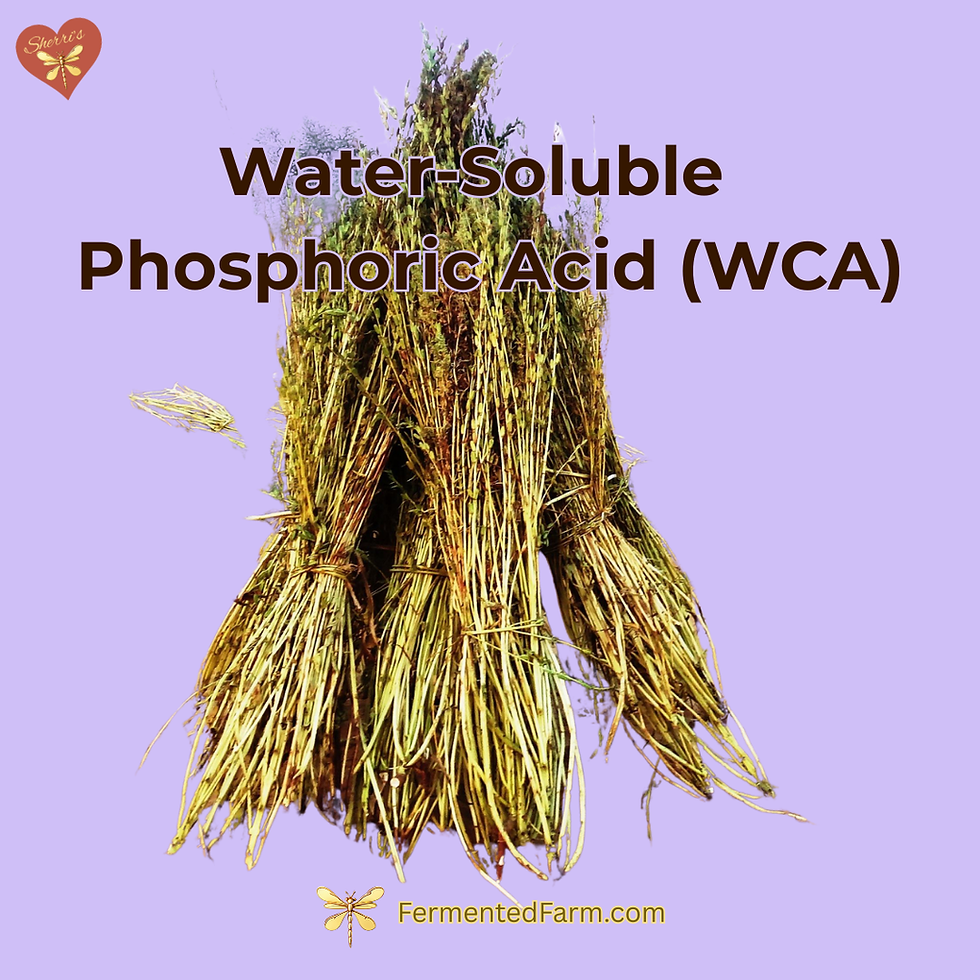Your Garden Needs Water
- Sherri Miller

- Apr 29, 2022
- 3 min read

LIBERTY GARDEN
What do you need to grow food?
1. Air
2. Water
3. Sun – Light & Heat
4. Soil
5. Nutrients, Minerals
6. Plants & Seeds
YOUR GARDEN NEEDS WATER
In this series we discuss what is needed to grow food. This episode is about water.
WATER
All life needs clean water.
Trouble with Tap Water
Too much water
Not enough water
Everything on Earth needs water to live. Water is the Life Force Activator. However there can be problems with water. Chemicals in the water, too much water, or too little water can kill plants.
TROUBLE WITH TAPWATER
Plants and animals drink water. Plants drink through their roots. Plants will uptake whatever is dissolved in the water.
Tap water often has chemicals that can be harmful to plants. A municipal source can contain chlorine compounds, fluoride, even pharmaceuticals, all which can kill soil microbes and harm plants (and your family).
Well-water can contain too much iron, anaerobic pathogens and have other problems. Plants cannot filter out harmful elements in water.
What will you do if the municipal water quality has been compromised, either by system malfunctions or nefarious actions? How will you know? Will you be told before your health has been compromised or your garden is dying? If you have a well and the pump fails, what will you do?
Discover ways that you can get water if the tap stops running or the well runs dry. If your water has been harmful chemicals or has been compromised find ways to make your water potable.
You may need water filters. If you cannot buy one, either from lack of availability or lack of funds, learn how to make one. Perhaps collecting and storing rainwater is a good option.
You and your family, your garden and your pets, all need water, and that water needs to be safe. Having a stable source of clean water is important if you want to grow food and have personal food security.
TOO MUCH WATER
When plants get too much water they can rot and die. Typically this starts with the roots, but wet leaves can lead to problems above ground. Most plants cannot tolerate being in water for very long. They literally drown.
Too much moisture can make conditions favorable for a big list of bad diseases. Damping off is when a sprouted seedling suddenly dies at the roots and falls over dead. This is caused by too much moisture in the soil. Almost all plants do best if the soil is allowed to dry out in-between waterings.
Too much moisture on the leaves can cause leaves to rot. Try to keep the above parts of plants dry. Rainwater is natural and is highly oxygenated. Rain will only become a problem if the season is exceptionally wet. Good airflow will kept keep outdoor foliage dry.
NOT ENOUGH WATER
Just like you, if plants don’t get enough water, they will die of thirst. Most plants will show signs of wilting when they need water, but some plants will dry out and die without preliminary symptoms. Keep an eye on water levels by checking the moisture in the soil directly.
If checking with your finger dig down a little. The surface can be dry while the root zone is wet. There are fancy meters to measure moisture levels in the soil. There are even cute little clay critters that can indicate when soil dries out.
Any plant in a situation that is too wet or too dry can die. How much water a plant needs depends on many factors:
Type of Plant
Desert plants and succulents have evolved to deal with low levels of water
Rainforest and many tropical plants can handle a lot of water and have pointed leaf tips to drain off water quickly.
Plants that grow in and near water, lakes, rivers & streams can handle wet roots
Tender plants will die easily with a lack of water
Drainage
Drainage may cause soil to dry out too quickly or not at all
Temperature
More water evaporates with higher temperatures and can lead to dryness & death
Humidity
Low levels of humidity can lead to plants drying out and wilting
High levels of humidity can lead to fungal diseases
MONITOR WATER & MOISTURE LEVELES
Learn how much water each plant you grow needs. Monitor moisture levels by checking the soil in the root zone. This can be cone with a finger, a probe, or a moisture meter. There are even cute little clay critters that indicate soil moisture.
If you notice any pests or diseases one of the first things to check is water and moisture levels.
Yellowing leaves can indicate both overwatering and under-watering. You can learn to tell the difference.
Wilted leaves can indicate too little water or too much heat, or both.
Humid still air can lead to fungal diseases. Increased airflow can decrease humidity.




Comments